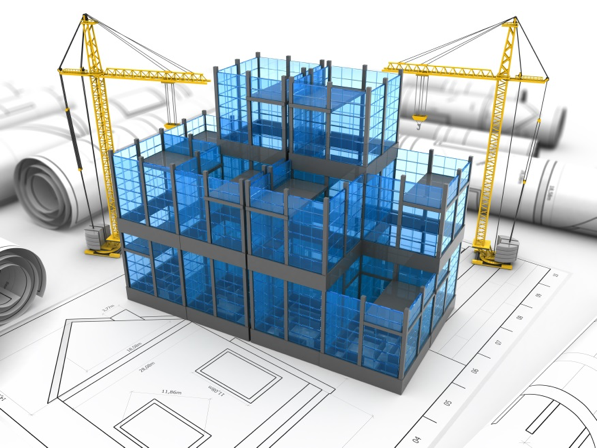Automation through Building Information Modeling: Capitol degree program highlights the cutting edge in construction management
December 19, 2018Once, you could walk into any construction manager’s office and see maps and drawings spread out on every available surface, with others rolled up and propped against walls or furniture.
Then computers and the internet came along, changing just about every aspect of the job.
These days, most project information is stored on a computer. Architects, engineers, and managers use sophisticated software to render buildings and infrastructure in 3D, with a degree of precision that would have been unthinkable in a prior age.
An innovation known as Building Information Modeling(BIM) provides at-your-fingertips access not only to 3D representations of a structure-in-progress, but to an abundance of other essential data about its physical characteristics and functionality. BIM software allows all this information to be aggregated, organized, and fed into workflows, thus streamlining the management process.
“BIM isn’t just about 3D design, although that’s an important part of it,” says Gary Burke, director of the newly-launched construction management and critical infrastructure programat Capitol Technology University. “You could describe it as modeling plus a database plus a set of collaborative tools. It’s an extremely powerful resource that not only streamlines the entire construction process, but allows you to make better decisions early on – because it shows you the impact of those decisions on the final product.”
It also dovetails with another emerging trend in the construction industry: the move towards automation.
“We’re going to be seeing automated systems – including robots and drones – doing more and more of the work that was formerly done by human workers at a construction site,” Burke says. “Indeed, some predictthat by 2050 we’re going to see all of the physical work on a site being done by machines.”
“In order for that to happen, though, we’re going to need very sophisticated project management systems that enable us to track all aspects of a project from inception to completion. BIM is a step in that direction,” Burke says.
Learning to use BIM is a must for any student aspiring to a construction management career today, and it’s a key focus of the curriculum at Capitol Tech. A course taught by Burke, Construction Graphics and Plan Reading, introduces students to BIM software and processes early on in the program – with subsequent courses and labs providing abundant hands-on practice.
The focus on BIM is in keeping with the overall intention at Capitol Tech, which is to train students for the industry of the future – not the one that computer technology is leaving behind.
“We want to make sure our graduates not only understand but are able to apply the latest technologies, models, and approaches,” Burke said. “That’s what’s going to get them a job starting out, and it’s also going to ensure them a flourishing career down the road. Construction management, like everything else, has been transformed by the digital era, and our program reflects these ongoing transformations.”
Want to gain hands-on experience with BIM software and obtain the skills and expertise needed for a rewarding career in construction management? To learn more about the construction management program at Capitol, visit our website or contact admissions@captechu.edu.



